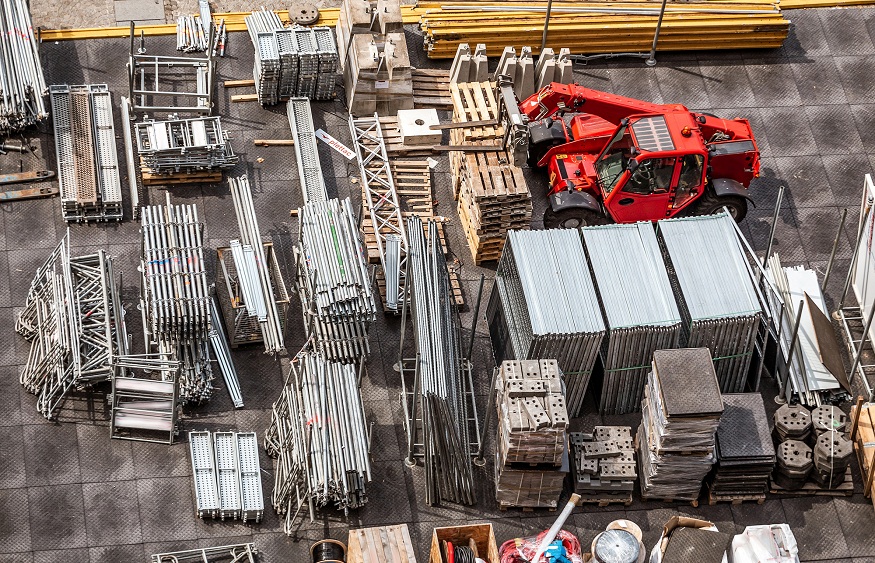Ambitious modern architecture envisions towers stretching into skies, expansive stadiums spanning massive footprints, soaring snake-like complexes, and lightweight transparent structures with unobstructed views. But erecting breathtaking mega buildings demands incredibly strong structural materials able to safely support tremendous weights – from self-loading, occupants, furniture, wind shear, and seismic acceleration.
Traditional building materials like cast concrete, structural steel, heavy timber, and masonry block do provide good strength capacity but possess limitations around density, excessive self-weight, corrosion vulnerability, linear design requirements, conductivity issues, and connectivity challenges. Architects are thus increasingly embracing advanced composite substances and high-performance alloys to manifest the next generation of improbable designs.
Optimizing Strength Through Materials Science
The most prolific tactic for developing ultra-high strength properties is strategically combining very strong fibers or particles encased within a transfer medium to share loads efficiently across microscopic and macroscopic dimensions. Termed composite materials, the fibers impart chief tensile and compression capacity along their principal axes, while the surrounding medium binds fibers together, transfers stresses between them, and stabilizes shapes.
Notable examples include glass and carbon fiber-reinforced polymer (FRPs) composites, typically using fine high-strength glass or carbon filaments woven into fabric sheets then saturated with epoxy or polyester resins. Basalt and aramid fibers present alternatives too. Even metal wires and ceramic whiskers reinforce some matrices. Hybrid mixes merge assets of multiple composites. And metallic alloys leverage nanoscale treatments and smart microstructures to achieve unmatched yield strength properties.
The experts at Axiom Materials tell us that architects also leverage advanced composite formulations like aerospace-grade fiberglass prepregs, carbon fiber laminates, and natural composites using jute, hemp, or kenaf paired with bio-resins.
Benefits Driving Adoption in Structures
Several useful advantages emerge from judiciously substituting high strength engineered composites and alloys for conventional materials in colossal buildings and bridges that permit innovative architectural possibilities:
- Extreme Lightweighting – Advanced fiber-reinforced composites can weigh around 80% less than structural steel members yet provide strength increases exceeding 500% and comparable stiffness. This vast self-weight reduction decreases seismic loading demands dramatically and shrinks foundation requirements. Lightweight builds are also faster to fabricate and easier to transport and install on tight sites.
- Corrosion Resistance – Durable epoxy, polyester and nylon polymer matrices protecting embedded glass, carbon, and synthetic fibers insulate against moisture, salt, and chemicals. Unlike unprotected steel, advanced composites do not corrode or decay over decades, saving fortunes in maintenance costs.
- Elevated Design Freedom – Moldability empowers forming double-curved shells, branching columns, sweeping facades, transparent sections, and smooth surfaces unattainable by rectilinear steel members or concrete pouring. This geometric freedom enables architects to bring revolutionary free-form ideas to life.
- Electrical and Thermal Insulation – Unlike thermally conductive metals, the polymeric resins used in most structural composites do not transmit heat or electricity, enhancing building envelope efficiency. This also prevents short-circuit risks while opening doors for integrated wiring channels.
Illustrating Potential in Modern Architectural Marvels
Record-setting contemporary buildings aptly demonstrate high-strength material capabilities, moving beyond traditional notions of possible spaces:
- Dallas Cowboys Stadium achieves structural stability for the world’s longest single-span arched roof at an incredible 660 feet using longitudinal steel cables integrated with composite glass fiber reinforcements.
- Moscow’s 79 story Evolution Tower shocks with a sophisticated lightweight glass fiber reinforced concrete facade able to rotationally twist through eight degrees by computer automation.
- Reaching over one vertical kilometer into Dubai’s clouds, the Burj Khalifa’s structural integrity owes to a high-performance reinforced concrete composite material called C50, fortified using specialty steel rebar.
Conclusion
Embracing materials science’s strongest and lightest creations into design ideation means tomorrow’s iconic towers, arenas, museums, and infrastructure everywhere will replicate Asia and Middle East levels of geometric complexity, resilience to natural disasters, and sustainability advantages right here at home.



